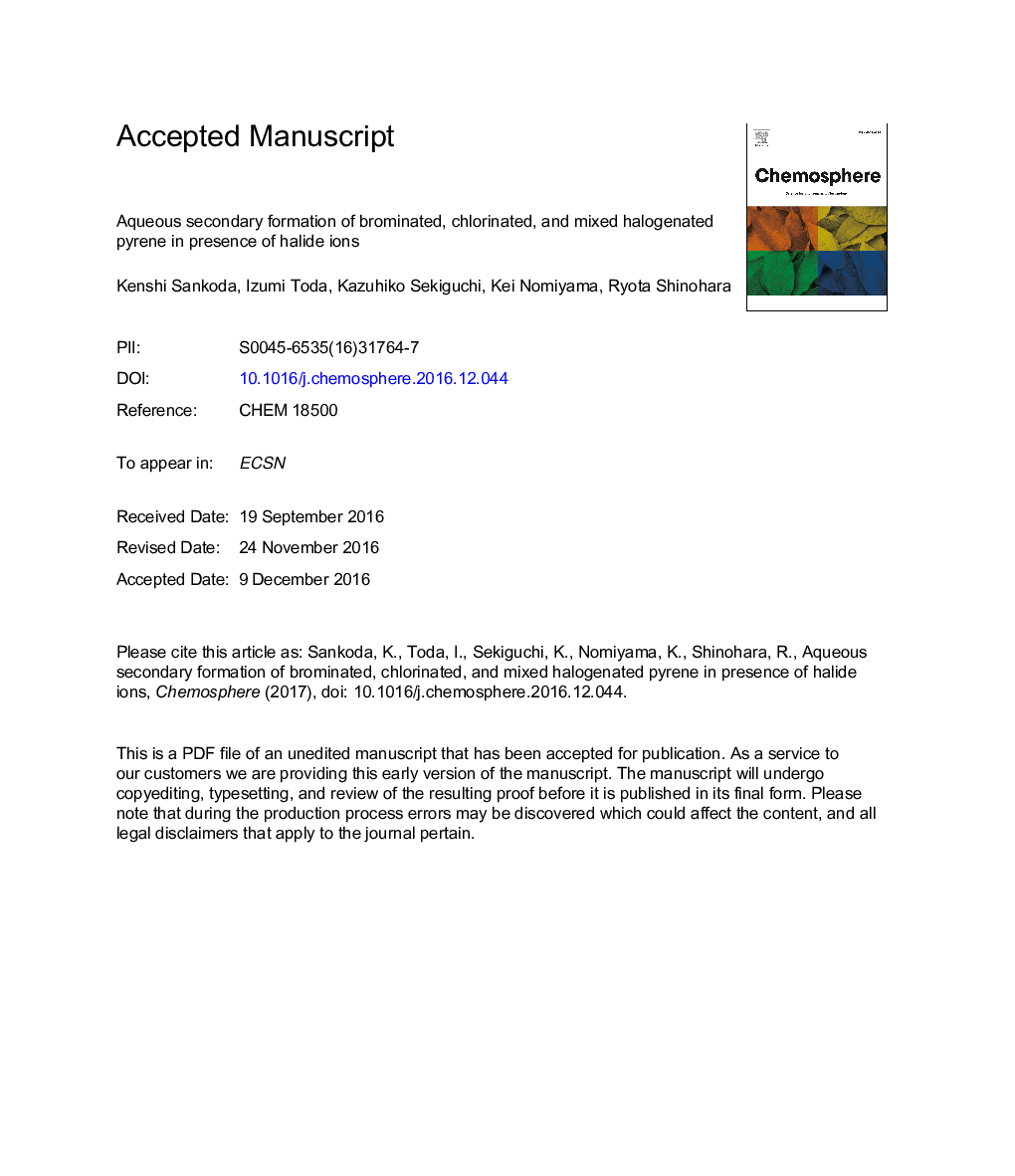| Article ID | Journal | Published Year | Pages | File Type |
|---|---|---|---|---|
| 5746336 | Chemosphere | 2017 | 30 Pages |
Abstract
We examined the secondary production of halogenated derivatives of polycyclic aromatic hydrocarbons (PAHs) in surface seawater. Pyrene was selected as the model compound and exposed to UV irradiation in synthetic seawater for various irradiation times. Pyrene underwent rapid photochemical reactions that produced various halogenated derivatives including 1-chloropyrene, 1-bromopyrene, three unidentified dichloropyrenes, and three unidentified bromochloropyrenes. The production of 1-chloropyrene (220-360Â nM) was higher than that of 1-bromopyrene (7.3-12Â nM), reflecting the high chlorine content of seawater. A pilot field survey was conducted to test the environmental implications of these results, and fresh, brackish, and seawater samples were collected in southwestern Japan. The variation in the concentration ratios between 1-chloropyrene and pyrene implied the presence of a specific source of 1-chloropyrene in coastal water, which can be partly explained by the secondary production observed in our photolysis experiments. In sum, the photochemical reactions of PAHs are a potential secondary source of halogenated PAHs, especially in marine environments heavily contaminated with PAHs.
Keywords
Related Topics
Life Sciences
Environmental Science
Environmental Chemistry
Authors
Kenshi Sankoda, Izumi Toda, Kazuhiko Sekiguchi, Kei Nomiyama, Ryota Shinohara,
